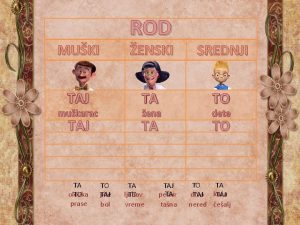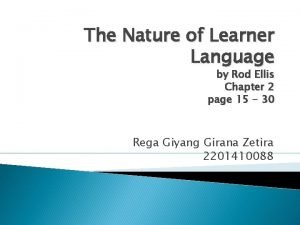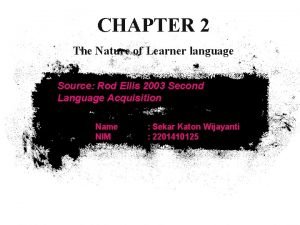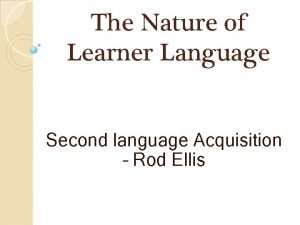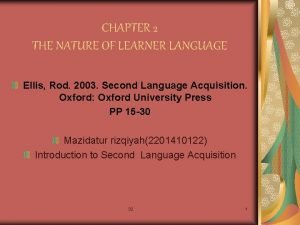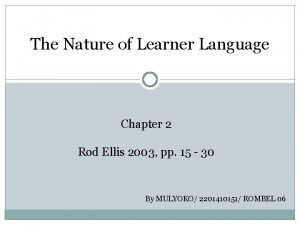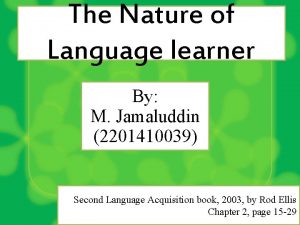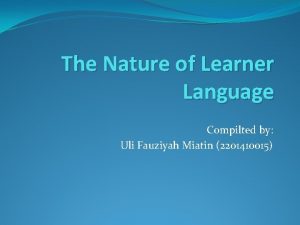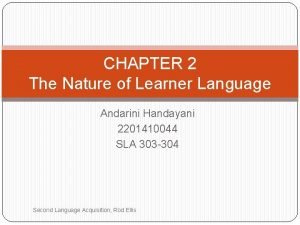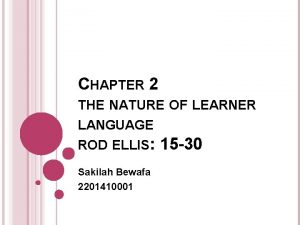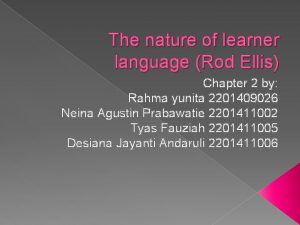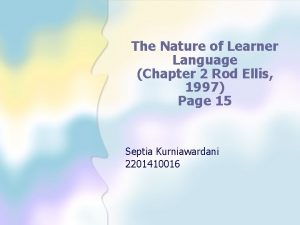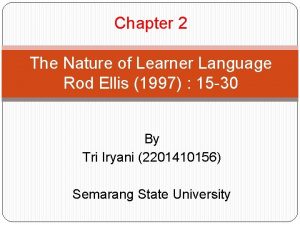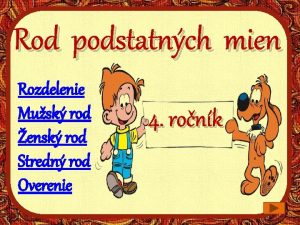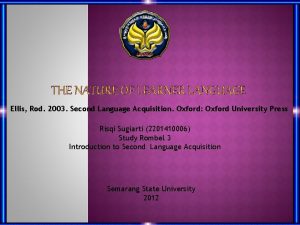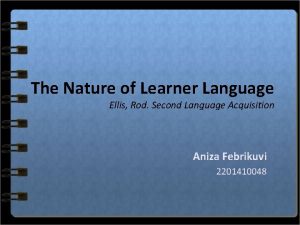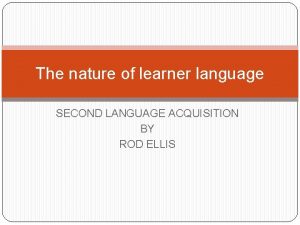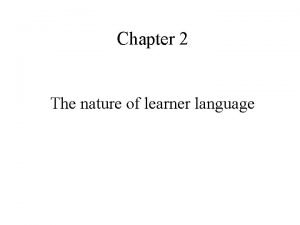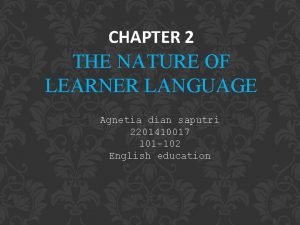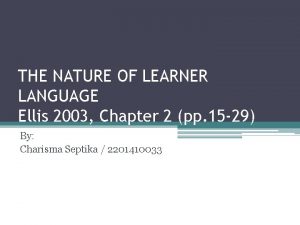The Nature of Learner Language Chapter 2 Rod

















- Slides: 17

The Nature of Learner Language Chapter 2 Rod Ellis 2003, pp. 15 - 30 By MULYOKO/ 2201410151/ ROMBEL 06

Three Areas in Investigating L 2 Acquisition: Kinds of errors learners make and how these change Identifying development pattern by describing the stages in the acq. pattern Examine the variability found in learner language

A. Errors and Error Analysis There are good reasons for focusing on errors: They are a conspicuous feature of learner language It is useful for teachers to know what errors learners make It is possible that making errors may actually ‘help learners’

Identifying Errors To identify errors we have to compare the sentences learners produce with what seem to be the normal one. A man and a little boy was watching him. The correct one should be: A man and a little boy were watching him.

Sometimes, learners produce sentences that are possible target-language sentences but not preferred ones. … went in the traffic. A native speaker would probably prefer to say: … went into the traffic.

It is difficult to reconstruct the correct sentence because we are not sure what the learner meant to say. The big of them contained a snake It might be: The bigger of them contained a snake.

The distinction between errors and mistakes. : Errors reflects gaps in a learner’s knowledge; they occur because the leaner does not know what is correct. Mistakes reflect occasional lapses in performance; they occur because, in a particular instance, the learner is unable to perform what he or she knows.

Describing Errors There are several ways of making classification of errors into types: Classifying errors into grammatical categories Trying to identify in general ways the errors

Explaining Errors Three main explanation of errors: Errors are, to a large extent, systematic and, to a certain extent, predictable. Errors are not only systematic; many of them are also universal not all errors are universal

Error Evaluation 1. Some errors can be considered more serious than others. 2. Some errors, known as global errors, violate the overall structure of a sentence

B. Development Patterns All learners, no matter whether they are learning naturalistically or in a classroom, and irrespective of their first language (L 1), make omissions, overgeneralization, and transfer errors

The Early Stages of L 2 Acquisition When learners do begin to speak in the L 2 their speech is likely to manifest two particular characteristics. They are: 1 st The kind of formulaic chunks, and 2 nd Proportional Implication

The Order of Acquisition To investigate the order of acquisition, researchers choose a number of grammatical structures to study (for example, progressive –ing, auxiliary be, and plural –s). They then collect samples of learner language and identify how accurately each features is used by different learners.

Sequence of Acquisition The example of how L 2 learners acquire irregular past tense forms. Stage Description Example 1 Learners fail to mark the verb for past time. ‘eat’ 2 Learners begin to produce irregular past tense forms. ‘ate’ 3 Learners over generalize the regular past tense form. ‘eated’ 4 Sometimes learners produce hybrid forms. ‘ated’ 5 Learners produce correct irregular past tense forms. ‘ate’

Some Implications The work on developmental patterns is important for another reason. It suggests that some linguistic features are inherently easier to learn than others. This has implications for both SLA theory and for language teaching.

C. Variability in learner language Language is systematic since it is possible that variability is also systematic. That is, we may be able to explain, and even predict, when learners use one form and when another.

THANKS FOR YOUR ATTENTION
 Muski i zenski rod
Muski i zenski rod Eager learning algorithm example
Eager learning algorithm example The nature of learner language
The nature of learner language The nature of learner language
The nature of learner language Nature of the learner
Nature of the learner The nature of learner language
The nature of learner language The nature of learner language
The nature of learner language The+nature+of+language+learner
The+nature+of+language+learner Compilted
Compilted The nature of learner language
The nature of learner language Nature and nature's law lay hid in night
Nature and nature's law lay hid in night Determinace lidské psychiky
Determinace lidské psychiky Lightning rod chapter 6
Lightning rod chapter 6 Hát kết hợp bộ gõ cơ thể
Hát kết hợp bộ gõ cơ thể Slidetodoc
Slidetodoc Bổ thể
Bổ thể Tỉ lệ cơ thể trẻ em
Tỉ lệ cơ thể trẻ em Chó sói
Chó sói
